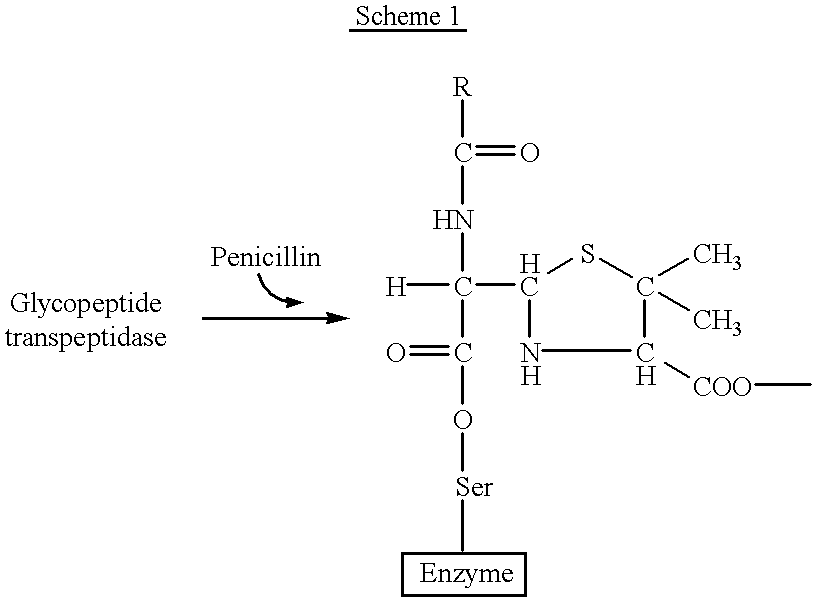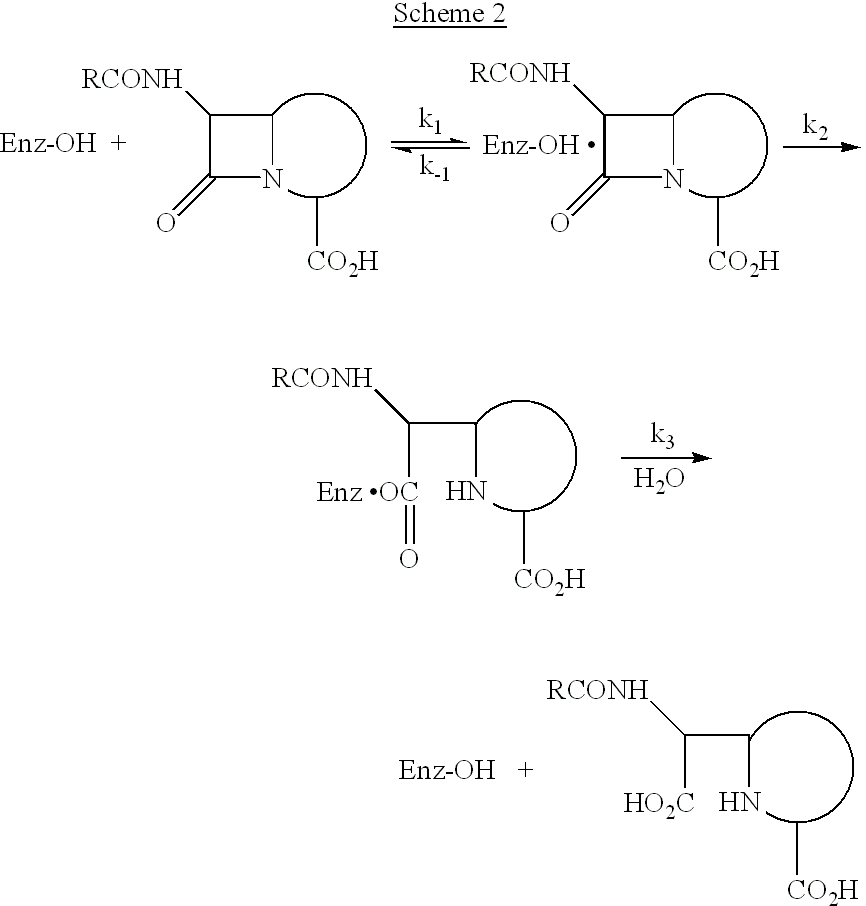Oxazinones having antibacterial activity
a technology of oxazinone and antibacterial activity, which is applied in the field of oxazinones having antibacterial activity, can solve the problems of inability to carry out the final step, bacterial cell swell, burst, and bacterial cell swell
- Summary
- Abstract
- Description
- Claims
- Application Information
AI Technical Summary
Benefits of technology
Problems solved by technology
Method used
Image
Examples
example 1
2Carboxymethyl-5-Hydroxy-1,2-Oxazin-3-one
Step 1
Benzyl .gamma.-Bromoacetoacetate. Diketene (500 .mu.L, 545 mg, 6.5 mmoles) was dissolved, under nitrogen, in dichloromethane (2 mL), cooled to -25.degree. C., and treated dropwise with a solution of bromine (333 .mu.L, 1.02 g, 6.5 mmoles) in dichloromethane (2 mL). After the addition was complete, the solution was stirred at -25.degree. C. for 15 min, and benzyl alcohol (700 .mu.L, 732 mg, 6.8 mmoles) was added dropwise. Stirring was continued for 15 min, and the solution was warmed to room temperature and evaporated. The residue was dissolved in diethyl ether (20 mL), washed successively with saturated sodium bicarbonate (2.times.20 mL), water (20 mL) and saturated sodium chloride (20 mL), dried over anhydrous magnesium sulfate and evaporated to give benzyl .gamma.-bromoacetoacetate as a pale yellow oil (1.70 g, 97%). .sup.1 HMR (CDCl.sub.3, .delta.): 7.36 (5H, m), 5.19 (2H, s), 4.02 (2H, s), 3.75 (2H, s). IR (neat): 3033, 1734, 1654 c...
example 2
2-[2-carboxypropyl]-5-hydroxy-1,2-oxazin-3-one
Step 1
t-Butyl 2-Bromopropionate. Isobutylene (2.4 g, 42.8 mmoles) was condensed into a pressure bottle at -15.degree. C. Dioxane (6 mL) and 2-bromopropionic acid (3.5 mL, 38.9 mmoles) were added and the mixture was stirred for 5 min, warmed to -10.degree. C., and concentrated sulfuric acid (250 .mu.L) was added. The bottle was scaled, the reaction mixture was stirred overnight at room temperature, and the bottle was then opened and the contents poured into dichloromethane (50 mL). The solution was washed with 2096 potassium carbonate (50 mL), water (50 ml), dried over anhydrous magnesium sulfate and evaporated to give t-butyl bromopropionate (2.17 g, 27%). .sup.1 HMR (CDCl.sub.3, .delta.): 4.31 (1H, q, 7.1 Hz), 1.81 (3H, d, 7.1 Hz), 1.52 (9H, s).
Step 2
t-Butyl N-Benzylidenealanine N-Oxide. Z-Benzaldoxime (580 mg, 4.79 mmoles) and t-butyl 2-bromopropionate (VI-18) (980 mg), 4.69 mmoles) were added successively to a solution of sodium hydri...
example 3
Bioassay of the Product of Example 1
Samples were applied to filter discs in the amounts indicated. The discs were applied to agar plates seeded with Micrococcus luteus, and the plates were incubated overnight at 37.degree. C. The results are illustrated in FIG. 5 and summarized in the following Table 1:
PUM
| Property | Measurement | Unit |
|---|---|---|
| bacterial resistance | aaaaa | aaaaa |
| resistance | aaaaa | aaaaa |
| crystal structures | aaaaa | aaaaa |
Abstract
Description
Claims
Application Information
 Login to View More
Login to View More - R&D
- Intellectual Property
- Life Sciences
- Materials
- Tech Scout
- Unparalleled Data Quality
- Higher Quality Content
- 60% Fewer Hallucinations
Browse by: Latest US Patents, China's latest patents, Technical Efficacy Thesaurus, Application Domain, Technology Topic, Popular Technical Reports.
© 2025 PatSnap. All rights reserved.Legal|Privacy policy|Modern Slavery Act Transparency Statement|Sitemap|About US| Contact US: help@patsnap.com



